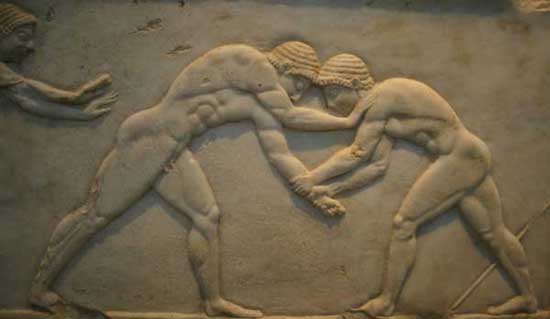
The youth of Rome, as in Greece, had several forms of play
and exercise, such as jumping, wrestling, boxing, and racing.

The youth of Rome, as in Greece, had several forms of play
and exercise, such as jumping, wrestling, boxing, and racing.
The Romans also had several forms of ball playing, including one resembling handball. Dice games, board games, and gamble games were popular pastimes. Women did not take part in these activities.
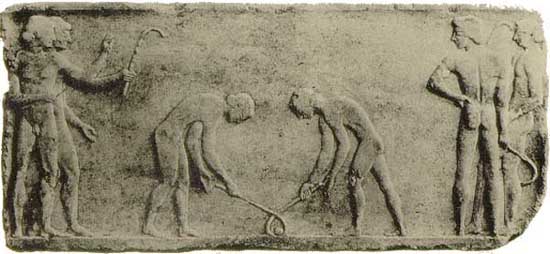
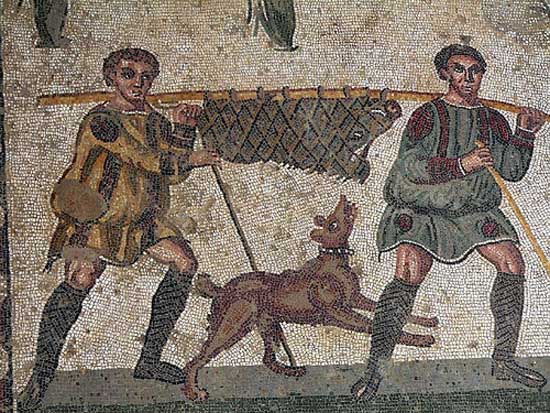
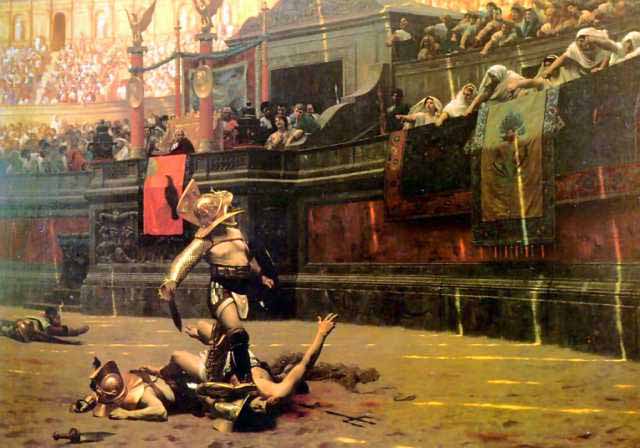
A popular form of entertainment was gladiatorial combats. Gladiators fought either to the death or to "first blood" with a variety of weapons in different scenarios. These fights achieved their height of popularity under the emperor Claudius, who placed the outcome of the combat firmly in the hands of the Emperor with a hand gesture. Contrary to popular representations in film, several experts believe the gesture for death was not "thumbs down". Although no one is certain about what the gestures were, some experts conclude that the emperor signaled "death" by holding a raised fist to the winning combatant and then extending his thumb upwards, while "mercy" was indicated by a raised fist with no extended thumb.

A gladiator (Latin: gladiator, "swordsman", from gladius, "sword") was an armed combatant who entertained audiences in the Roman Republic and Roman Empire in violent confrontations with other gladiators, wild animals, and condemned criminals. Some gladiators were volunteers who risked their legal and social standing and their lives by appearing in the arena. Most were despised as slaves, schooled under harsh conditions, socially marginalized, and segregated even in death.
Irrespective of their origin, gladiators offered audiences an example of Rome's martial ethics and, in fighting or dying well, they could inspire admiration and popular acclaim. They were celebrated in high and low art, and their value as entertainers was commemorated in precious and commonplace objects throughout the Roman world.
The origin of gladiatorial combat is open to debate. There is evidence of it in funeral rites during the Punic Wars of the 3rd century BCE, and thereafter it rapidly became an essential feature of politics and social life in the Roman world. Its popularity led to its use in ever more lavish and costly spectacles or "gladiatorial games".
The games reached their peak between the 1st century BCE and the 2nd century CE, and they finally declined during the early 5th century after the adoption of Christianity as state religion in the 390s, although "beast hunts" (venationes) were continued into the 6th century.
Animal shows were also popular with the Romans, where foreign animals were either displayed for the public or combined with gladiatorial combat. A prisoner or gladiator, armed or unarmed, was thrown into the arena and an animal was released.
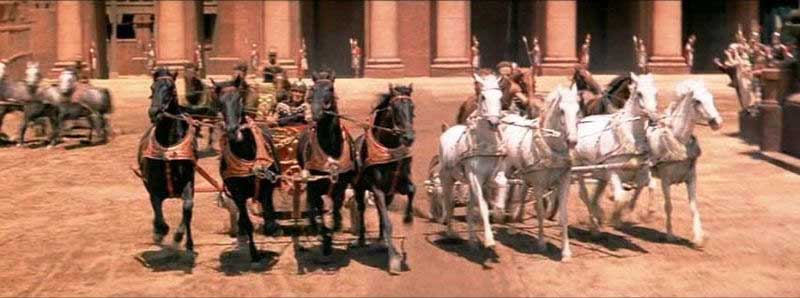
The Circus Maximus, another popular site in Rome, was primarily used for horse and chariot racing, and when the Circus was flooded, there could be sea battles. It was also used for many other events. The Circus could hold up to 385,000 people; people all over Rome would visit it. Two temples, one with seven large eggs and one with seven dolphins, lay in the middle of the track of Circus Maximus, and when the racers made a lap, one of each would be removed. This was done to keep the spectators and the racers informed of the race statistics.
Other than for sports, the Circus Maximus was also an area of marketing and gambling. Higher authorities, such as the Emperor, also attended games in the Circus Maximus, as it was considered rude to avoid attendance. The higher authorities, knights, and many other people who were involved with the race, sat in reserved seats located above everyone else. It was also considered inappropriate for emperors to favor a team. The Circus Maximus was created in 600 BC and hosted the last horse-racing game in 549 AD, after a custom enduring over a millennium.

For the wealthy, dinner parties presented an opportunity for entertainment, sometimes featuring music, dancing, and poetry readings. Plebeians sometimes enjoyed similar parties through clubs or associations, although recreational dining usually meant patronizing taverns. Children entertained themselves with toys and such games as leapfrog.
ANCIENT AND LOST CIVILIZATIONS